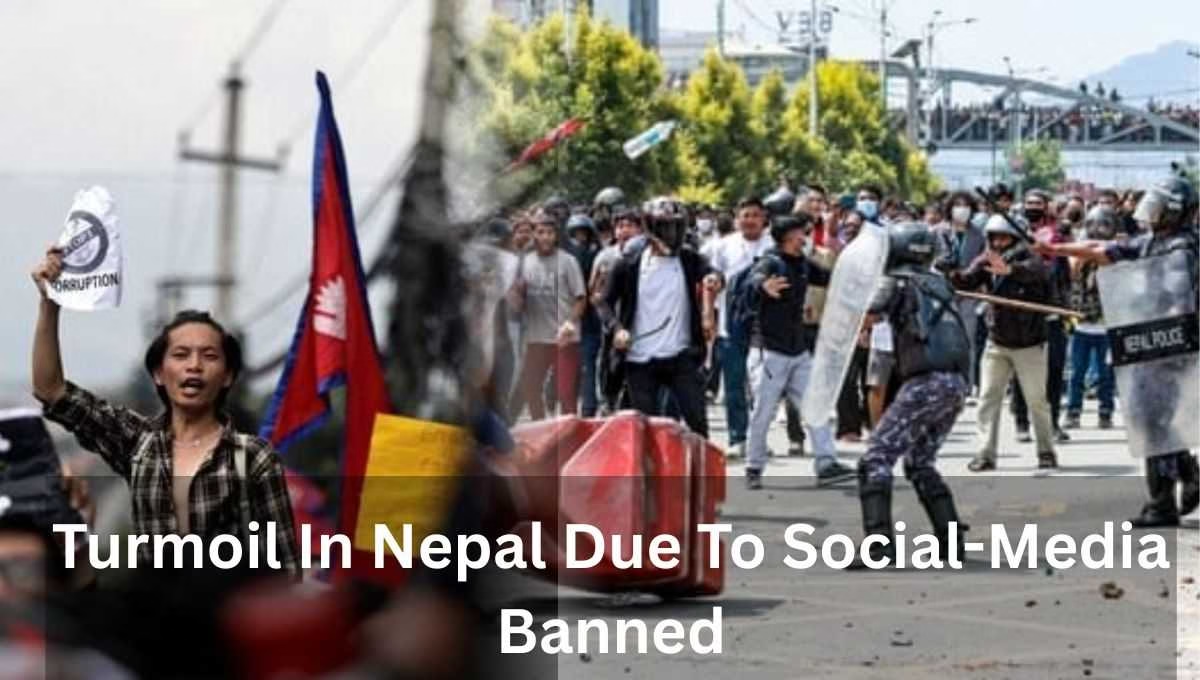At least 13 people have been killed and dozens more injured in a dramatic escalation of civil unrest in Nepal following widespread protests against the government’s recent decision to block major social media platforms. The demonstrations, which have turned violent in parts of Kathmandu, reflect growing public anger at what it sees as authoritarian moves by the government.
The spark behind the protests
The controversy began when Nepal’s Ministry of Communications and Information Technology ordered the blocking of 26 social media platforms, including some of the world’s largest social media platforms such as Facebook, X (formerly known as Twitter) and YouTube. Authorities justified the move by pointing to the platforms’ role in spreading fake news, hate speech and online fraud, which they claimed were destabilizing public discourse and harming national security.
The government has set a firm deadline for these platforms to register with the ministry and comply with local regulations. Failure to register will result in restrictions on accessibility, according to a government statement. After the deadline, only two platforms were registered and allowed to resume operations. The rest remain blocked, forcing millions of Nepalese users to use VPN services to bypass restrictions and continue accessing content.
Generation Z rally
Thousands of protesters, many of whom identify as part of Generation Z, took to the streets of the capital, Kathmandu in response to calls for action on social media ahead of the ban. The demonstrators portrayed a scene of desperation, demanding freedom of expression and opposing what they described as excessive aggression by the authoritarian government. The youth-led movement has gained significant popularity, with placards carrying slogans such as “Enough is enough” and “Stop corruption” visible in the crowd.
“This is not just about social media,” said one protester. “This is about free access to information and the right to express ourselves in the digital age. We will not let the government silence us.”
Clashes with security forces
The protests quickly escalated when protesters attempted to breach a strictly restricted area near the Nepali Parliament building. Reports indicate that some protesters scaled the wall and clashed with security forces. The police and army used force, using water cannons, batons, rubber bullets and tear gas to disperse the crowd.
Police spokesman Shekhar Khanal confirmed that the use of force became necessary after protesters entered the restricted area. At the same time, Kathmandu district authorities imposed a curfew in the central area around the Parliament building to try to control the violence and restore order. Meanwhile, the Nepal Army has deployed a small unit of soldiers to maintain control of the streets.
Despite these measures, the situation remained volatile, with several injured protesters being taken to hospital and property damage reported from the area. The death toll currently stands at 13, with the number expected to rise as investigations continue.
Government justification and public reaction
Nepal’s Communications Minister Prithvi Subba has supported the government’s decision, stressing that the goal is not to ban social media entirely but to regulate it in accordance with Nepali law. Subba stressed that the government’s goal is to combat the spread of misinformation, online scams, and content that promotes violence or hatred.
“Social media platforms need to follow our legal framework like any other business operating in Nepal,” Subba said in a government statement. “This is not censorship but responsible governance to protect the public interest.”
However, critics argue that the move is part of a broader government abuse that stifle democratic freedoms. Many citizens and digital rights advocates see the ban as a thinly veiled attempt to silence dissent and limit public discourse in a country struggling with political unrest.
“The government is using the excuse of fake news to suppress freedom of expression,” said one digital rights activist. “Social media is not just a tool for entertainment or business; for many, it is a lifeline for news, civic engagement, and connecting with the world.”
The Role of VPNs and Solutions
With social media restrictions taking effect, many Nepalese users are turning to VPN services to circumvent the ban and access blocked platforms. These tools allow people to connect to servers in other countries, making it appear as if they are browsing from a different location where restrictions do not apply.
While effective in the short term, this solution highlights a wider digital divide, as not everyone has the technical knowledge or financial means to use a VPN. Experts warn that such deceptive tools are only temporary solutions.
Hi, this is Admin from Indnexa. We publish content here that is authentic and has value for our readers. We do not mislead our readers by publishing fake news . We cover news related to Entertainment, Sports, Investments, Health, and so on. Providing the best news for our readers is our main motto. With a keen eye for detail and a drive to inform and inspire, we try to transform complex ideas into accessible content for curious minds.
